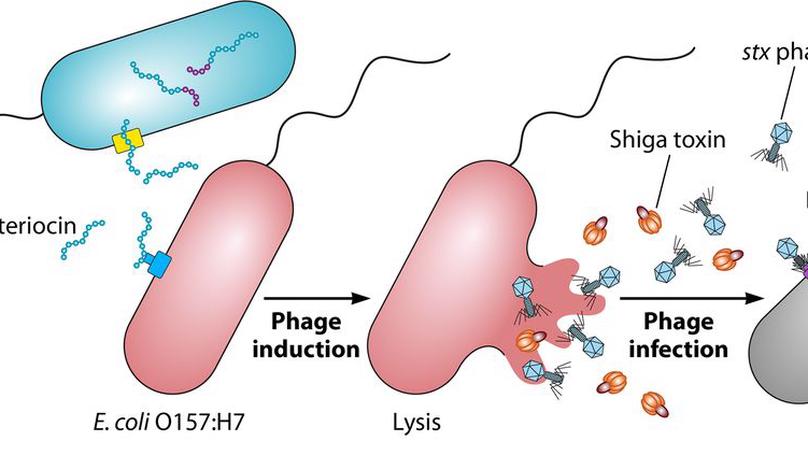Biography
Dr. Erin M. Nawrocki is a scientist in the Cooper Lab at the University of Pittsburgh. Her research interests include bacterial genetics, genomics, and molecular biology. Erin’s prior work in the Dudley Lab at Penn State involved characterization of an intraspecies interaction in which commensal E. coli enhanced the virulence of E. coli O157:H7. Erin also studied E. coli genes associated with adherence to bovine cells as part of a USDA-NIFA postdoctoral fellowship.
Erin completed her Ph.D. in the University of Wisconsin-Madison’s Microbiology Doctoral Training Program, where she researched the host range and mobilization of plasmids that encode botulinum neurotoxin.
- Bacterial Genetics
- Bacterial Genomics
- Molecular Biology
PhD in Microbiology, 2018
University of Wisconsin-Madison
BS in Biology, 2013
Allegheny College
Featured Publications

Enterohemorrhagic Escherichia coli (EHEC) strains, including E. coli O157:H7, cause severe illness in humans due to the production of Shiga toxin (Stx) and other virulence factors. Because Stx is coregulated with lambdoid prophage induction, its expression is especially susceptible to environmental cues. Infections with Stx-producing E. coli can be difficult to model due to the wide range of disease outcomes: some infections are relatively mild, while others have serious complications. Probiotic organisms, members of the gut microbiome, and organic acids can depress Stx production, in many cases by inhibiting the growth of EHEC strains. On the other hand, the factors currently known to amplify Stx act via their effect on the stx-converting phage. Here, we characterize two interactive mechanisms that increase Stx production by O157:H7 strains: first, direct interactions with phage-susceptible E. coli, and second, indirect amplification by secreted factors. Infection of susceptible strains by the stx-converting phage can expand the Stx-producing population in a human or animal host, and phage infection has been shown to modulate virulence in vitro and in vivo. Acellular factors, particularly colicins and microcins, can kill O157:H7 cells but may also trigger Stx expression in the process. Colicins, microcins, and other bacteriocins have diverse cellular targets, and many such molecules remain uncharacterized. The identification of additional Stx-amplifying microbial interactions will improve our understanding of E. coli O157:H7 infections and help elucidate the intricate regulation of pathogenicity in EHEC strains.